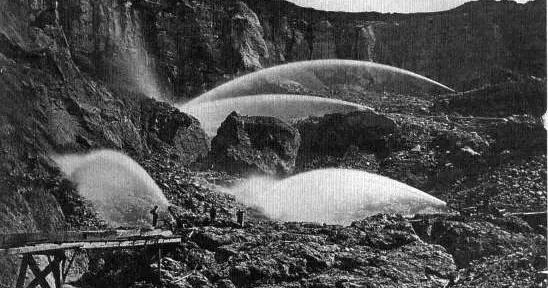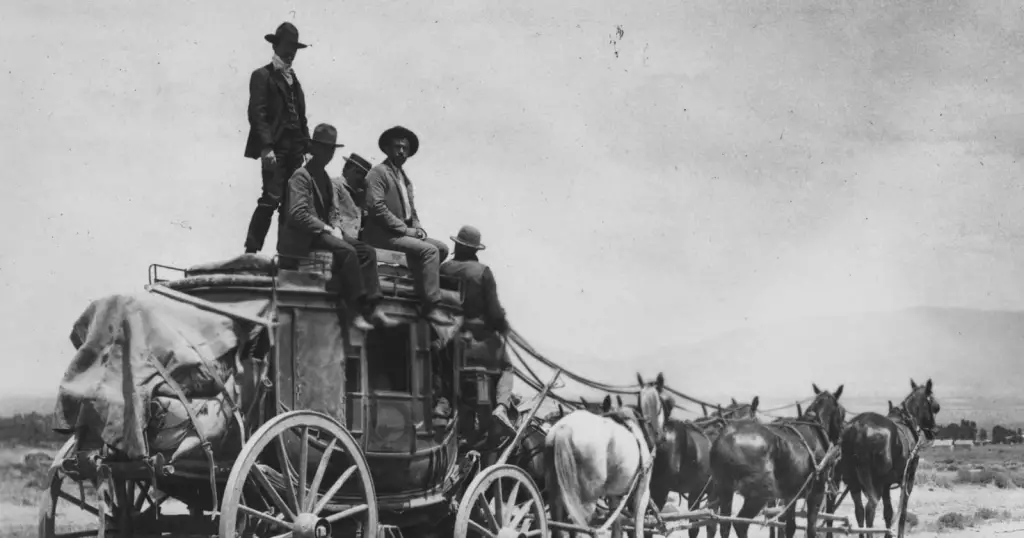Nestled in the heart of Arizona, Prescott experienced a remarkable metamorphosis during the gold rush era, a period that reshaped not just its economy but also its architectural identity. This transformation was marked by an influx of wealth and a melting pot of cultural influences, leading to significant changes in the city’s buildings and urban landscape.
This article explores Prescott’s architectural journey during this pivotal period, tracing the evolution from simple, functional structures to elaborate and stylistically diverse buildings.

It delves into the historical context, the various architectural styles and influences that emerged, the notable architects and builders who spearheaded this change, and the ongoing efforts to preserve and restore these historic structures, all of which collectively paint a vivid picture of Prescott’s rich heritage.
Historical Context of Prescott’s Architecture
Before the transformative gold rush era, Prescott’s architecture was a modest reflection of its early settlers and indigenous influences. The initial structures were simple and utilitarian, often constructed with local materials like wood and stone. These early buildings were designed to meet basic needs, with little emphasis on aesthetic appeal.
Indigenous architectural practices also played a role, showcasing sustainable designs that harmonized with the local environment. This foundational period set the stage for the dramatic shift that would occur with the gold rush when Prescott’s architectural landscape would evolve to mirror its newfound prosperity and cultural diversity.
Pre-Gold Rush Architectural Styles
Before the gold rush, Prescott’s architecture was modest, predominantly comprising indigenous structures and basic settler constructions. The indigenous influence was characterized by the use of local materials, creating sustainable and climate-adaptive dwellings.
Early settler constructions, on the other hand, were rudimentary, reflecting the simplicity and practical needs of the early inhabitants. Structures from this period often utilized wood and stone, with designs focused on functionality rather than aesthetic appeal.
The Gold Rush Impact: A Catalyst for Change
The discovery of gold in the mid-1800s marked a turning point for Prescott. This event not only brought wealth but also attracted a diverse population, leading to a surge in construction and architectural innovation.
The economic boom facilitated the adoption of new architectural styles and the incorporation of more elaborate designs and materials.
Architectural Styles and Influences
During Prescott’s gold rush era, the city’s architectural styles and influences underwent a dramatic transformation, mirroring the wealth and diversity brought by the mining boom. The period saw a significant shift from simple, functional structures to more elaborate and stylistically diverse buildings.
Victorian architecture, with its ornate detailing and elegant facades, became particularly prominent in residential areas, symbolizing the prosperity of the time. Commercial buildings, too, evolved, showcasing features like large display windows and elaborate woodwork, reflecting the burgeoning economic activity.
This architectural evolution not only redefined Prescott’s physical landscape but also its cultural and social ethos, marking a period of significant growth and development in the city’s history.
Victorian Influence on Residential Buildings
With the gold rush, Victorian architecture started to leave its mark on Prescott. This style, characterized by intricate designs and ornate details, became popular for residential buildings. Features such as steep gabled roofs, rounded arches, and decorative trims became common.
Prominent Victorian structures in Prescott, such as the Bashford House, stand as testaments to this era. These buildings showcase the opulence and prosperity brought about by the gold rush, with their elaborate designs and attention to detail.
The Emergence of Commercial Architecture
The economic boom also led to the development of commercial architecture. Gold rush-era stores and saloons were designed to be functional yet visually appealing, often featuring large display windows, ornate woodwork, and decorative facades.
Key commercial buildings from this era, like the Palace Saloon, not only served as business hubs but also became central to the social life in Prescott, reflecting the city’s growing prosperity and communal spirit.
Public and Civic Structures
The growth in wealth and population necessitated the construction of public and civic structures. Government buildings from this period often displayed a mix of sturdiness and elegance, indicating the emerging civic pride and stability of the local administration.
Educational and religious architecture also evolved, with schools and churches being constructed to cater to the growing community. These structures often embodied a simpler version of the Victorian style, prioritizing functionality while still integrating aesthetic elements.
Notable Architects and Builders
The architectural landscape of Prescott during the Gold Rush era was significantly shaped by a cadre of notable architects and builders. These individuals, a blend of local talent and newcomers drawn by the burgeoning opportunities, left an indelible mark on the city’s skyline.

Their diverse backgrounds and innovative approaches brought a variety of styles and techniques to Prescott’s architecture, ranging from Victorian elegance to pragmatic commercial designs.
The legacy of these architects and builders is evident in the distinctive buildings that dot the city, each telling a story of creativity, adaptation, and the pursuit of architectural excellence in a time of rapid growth and change.
Their contributions not only defined the aesthetic of an era but also laid the foundations for Prescott’s future development.
Pioneers of Prescott’s Architectural Landscape
Several architects and builders played pivotal roles in shaping Prescott’s skyline. Their biographies reveal a mix of local craftsmen and those who migrated to Prescott, drawn by the opportunities of the gold rush. Their contributions not only defined the city’s aesthetic but also showcased their individual styles and innovations.
The signature styles of these architects varied, with some favoring the ornate Victorian approach, while others leaned toward more pragmatic designs. This diversity in architectural thought and execution contributed significantly to the uniqueness of Prescott’s buildings.
Craftsmanship and Construction Techniques
The construction techniques during the gold rush evolved from simple, rudimentary methods to more sophisticated approaches. This period saw a blend of traditional methods with new innovations brought by the influx of skilled laborers and materials.
The use of local and imported materials became a defining feature of Prescott’s architecture. Local stone, wood, and adobe were commonly used, while more exotic materials were brought in as the railroads expanded, allowing for greater architectural diversity and complexity.
Preservation and Restoration
The preservation and restoration of Prescott’s historic buildings, shaped during the gold rush era, has become a vital part of maintaining the city’s rich architectural heritage.
Efforts to preserve these structures involve meticulous restoration to their original state, combating challenges like environmental wear and urban development. These endeavors not only safeguard the physical remnants of Prescott’s past but also serve as a testament to the city’s commitment to honoring and sustaining its historical identity.
Through these conservation initiatives, Prescott’s unique architectural legacy continues to be a source of pride and a window into a pivotal era in its history.
Challenges in Preserving Historic Buildings
Preserving Prescott’s historic buildings has not been without challenges. Factors such as environmental degradation and urban development have posed significant threats to these architectural treasures.
Restoration efforts have been implemented to combat these challenges, with many success stories where historic structures have been brought back to their former glory. These efforts are crucial in maintaining the city’s historical identity and charm.
Modern Adaptations of Historic Styles
In recent years, there has been a trend of blending old with new. Contemporary interpretations of historic styles can be seen in various structures, where modern functionality meets historic aesthetics.
Case studies of successfully integrated structures demonstrate how historic preservation can coexist with modern development, ensuring that Prescott’s architectural legacy continues to thrive in the 21st century.
Impact on Culture and Society
Prescott’s architectural transformation during the gold rush significantly influenced its culture and society. The shift in architectural styles and the emergence of grand, ornate buildings reflected the city’s newfound prosperity and cosmopolitan nature.
This period marked a departure from simple, functional structures to more elaborate designs, showcasing the community’s economic success and cultural evolution.
These architectural developments not only reshaped the city’s physical landscape but also its social fabric, embedding a sense of pride and identity that continues to resonate in Prescott’s culture and heritage today.
Architecture as a Reflection of Prosperity and Growth
The architectural transformation of Prescott during the gold rush reflects the city’s prosperity and growth. These structures not only served practical purposes but also became symbols of economic success and social progress.
The economic and social implications of this architectural boom were significant, influencing everything from the city’s infrastructure to its cultural identity. Prescott’s skyline became a physical manifestation of its rich history and dynamic growth.
Influence on Modern Prescott
Today, Prescott’s architectural heritage is a key component of its identity. The preservation of historic buildings has become a priority, fostering tourism and heritage conservation.

This architectural legacy continues to influence contemporary Prescott, serving as a reminder of the city’s vibrant past and as a foundation for its future development.
FAQs: Prescott’s Architectural Transformation During The Gold Rush
In this section, we will be delving into some of the most common inquiries and curiosities that surround our topic.
What architectural styles were predominant in Prescott before the gold rush?
Before the gold rush, indigenous structures and basic settler constructions were predominant, characterized by their practicality and use of local materials.
Can you name a few iconic buildings from Prescott’s gold rush era and their significance?
Notable buildings include the Bashford House, showcasing Victorian elegance, and the Palace Saloon, a prime example of commercial architecture that became a social hub during the era.
What measures are being taken to preserve Prescott’s historic buildings?
Preservation efforts include restoration projects and protective legislation to maintain the integrity of historic structures, combating environmental and developmental challenges.
How has Prescott’s architectural heritage influenced its current cultural identity?
The architectural heritage has significantly shaped Prescott’s identity, symbolizing its historical prosperity and growth, and continues to influence its culture, tourism, and urban development.
Conclusion
The architectural transformation of Prescott during the gold rush is a fascinating journey through history, reflecting the city’s evolution from a modest settlement to a prosperous community.
This evolution not only shaped its physical landscape but also its cultural identity, leaving a legacy that continues to resonate in modern times. The preservation of these architectural treasures is crucial for future generations to appreciate and learn from Prescott’s rich historical tapestry.



Leave a Comment
You must be logged in to post a comment.